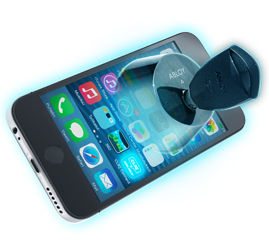A white paper from the physical security product company Abloy UK covers how the critical infrastructure sector can unlock the potential of smartphones in the workplace to improve employee mobility, job satisfaction and productivity.
Despite more consumers using smartphones, many organisations haven’t been as quick to tap into the uses and benefits smartphones can provide. Abloy says that smartphones should be an extension of IT infrastructure, and users can benefit from the device far greater than just a phone on a network. Integrating a device is more cost effective, functional and secure, the company argues.
The paper looks at how the cloud, integration, 5G and advances in battery life all mean that smartphones are now essential pieces of IT equipment, which should be used when they’re the most efficient tool for the job. It explores how critical infrastructure organisations can particularly benefit from this transition, as widespread roll out can deliver financial savings, environmental benefits and improve operational efficiencies.
The paper also outlines the solution available to achieve this ‘keyvolution’, such as the CLIQ system, PROTEC2 CLIQ technology and the new BEAT digital padlock. BEAT is a keyless solution that combines a digital key, a mobile app and a Bluetooth padlock, for critical infrastructure sites, the product firm says.
Pip Courcoux, Sales and Product Manager at Abloy UK, said: “We believe that smartphones will become a much more integral part of the next generation of access control systems. They are capable of so many functions that have become a central part of businesses network infrastructure.
“We have probably only realised a fraction of the value that smartphones can bring, and how they can provide the edge computing and connectivity necessary for true digital transformation. This will only be increased further by the introduction of 5G, offering faster connection speeds and a faster transfer of data.
“Ultimately smartphones will revolutionise remote access control by bringing it into the digital era. The overall benefits of flexibility, time and financial savings, improved security and ease of use are too good to ignore. Their role in helping to effectively secure and manage sites allows critical infrastructure organisations to provide service continuity while building resilience.”
To read and download the white paper, visit https://bit.ly/2J7F8rg.









